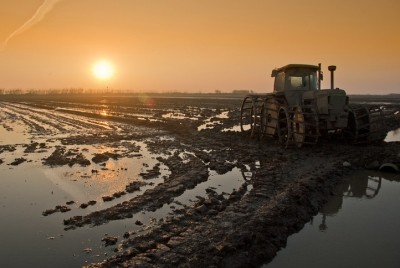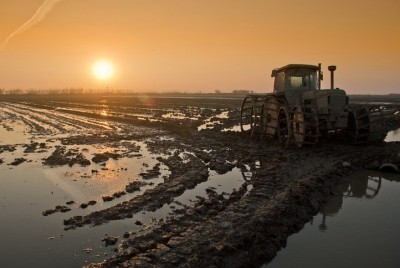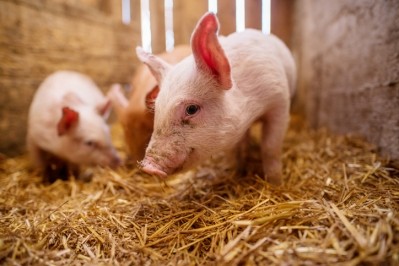Severe US weather blamed for drop in ADM first quarter results

The Illinois-based company reported results of its first quarter for 2019 on Friday [April 26] for the period that ended March 31.
The first quarter was “more challenging than initially expected,” said Juan Luciano, Archer Daniels Midland Company (ADM) CEO and chairman.
The company reported negative effects of severe weather in North America and the ethanol industry.
ADM is continuing work on streamlining the business and continues to address readiness practices, he said during a conference call. “Readiness is truly changing how we run our business in fundamental ways,” he added.
“We’re pulling the levers under our control, which we expect to help contribute to a stronger second half,” he said. “In addition, we expect some changes in outside conditions particularly relating to China. While there can’t be complete certainty we see encouraging signs regarding a resolution of the US-China trade dispute and we’re optimistic for a resolution by mid-year – importantly well before the US harvest.”
The company has been working to minimize the influence of trade uncertainty, but a resolution is anticipated to benefit several parts of the company, he said.
There also are expected to be some opportunities related to addressing implications of the ongoing African Swine Fever outbreak in China, Luciano said. “Estimates vary, but it’s possible that China’s hog herd has dropped 20-30%."
That loss in production is about the size of the US pork production, he said.
“This will create a gap in China, give or take, of about 10m tons of protein – that’s a lot and that is going to be a pressure on a system that is already working with good demand.
“China will clearly need to import substantial amounts of pork and likely other meat and poultry to satisfy demand, [and] this could boost soybean meal demand in areas where our oilseeds business has a strong presence – particularly north America, Brazil and Europe."
There has yet to be a “significant spike” in demand, but the second part of the year is anticipated to be bullish for grains, ethanol and pork, he said.
Overall, the company reported net earnings of $233m for the quarter a drop from the 393m reported last year. Earnings being income taxes (EBIT) dropped from $464m in 2018 to $315m.
However, gross profit for the quarter was $928m, up from $889m for the same period last year, ADM said.
Segment highlights
Total segment operating profit for the quarter was $611m and adjusted segment operating profit was $608, ADM reported. In the first quarter of 2018, total segment operating profit was $704m and the adjusted segment operating profit was $717m.
The drop in adjusted segment operating profit was about 15%, added Ray Young, CFO with ADM.
Within the segments, origination outperformed the first quarter of 2017, the company reported. In 2019, the company reported operating profit of $76m in origination, compared to $46m for the same period in 2018.
“Origination results were higher than the prior year period despite approximately $30m in impacts from severe weather conditions,” said Young. “Merchandising and handling were up compared to the first quarter of 2018, which had been negatively impacted by significant mark-to-mark timing effects.”
“The team executed well and drove solid margins for North America exports of both soybeans and corn in addition to a strong performance in structured trade advance, and some reversal in timing impacts from the fourth quarter helped offset the softer performance in global trade, which was impacted by normalized South American soybean and soybean meal margins versus the first quarter of last year,” he added. “Results in the quarter were also held back by high water river conditions which limited grain movement in and sales in North America.”
Looking at the second quarter of the year, the expectation is that results will be “significantly lower” than the “very high” second quarter of 2018 but similar to results for the first quarter of 2019, he said.
“In 2018, North American exports were abnormally high in anticipation of a trade shutdown with China,” he said. “Absent those conditions this year, North American volumes and margins will be substantially lower in the second quarter [and] in addition high water will continue.”
However, results for the second half of the year anticipate seeing benefits from a forecast resolution to the ongoing US-China trade situation, Young said.
The nutrition segment, which includes animal feed efforts, saw operating profits of $81m, down from $96m for the previous year, the company said.
Results for WFSI actually improved for the quarter, but animal nutrition fell, said Young.
“Last year’s quarter benefited from a strong inventory position during a temporary industry shortage of vitamins A and E, whereas premix margins this year reflect normalized vitamin costs,” he said of the animal nutrition returns. “Additionally, Neovia closed on January 31 and purchase price adjustments resulted in an incremental $10m in inventory costs that flowed through our results for the quarter.”
Lysine production continues to expand but has yet to reach its previous levels, he added. In the second quarter, the anticipation is that more benefit from Neovia will be seen and lysine will continue to recover.
In oilseeds, the company had operating profits of $349m in 2018, compared to $341m for that period this year.
Results in oilseeds were comparable across the two years, said Young. However, crushing origination improved in the first quarter and a “reversal of timing impacts from the previous quarter had a positive effect of about $75m.”
“We expect second quarter results to be about 20% down from the exceptionally high second quarter last year,” he said. “The growing impact of African swine fever points toward greater demand for soybean meal outside of China in the back half of this year and likely beyond.”
In carbohydrate solutions, results dropped from $213m to $96m, the company reported.













